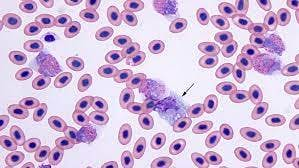Generating integrated bill of materials using mask R-CNN models for construction

Summary: Researchers from Pusan National University recently studied ways to utilize AI to identify concrete formworks. Concrete formworks are temporary structures that are used as a mold for concrete placement during construction. AI can be a practical solution that can overcome the difficulties associated with traditional bill of materials preparation and help automatically generate concrete formwork bill of materials (BoMs).
Challenge: Concrete formwork is a crucial temporary structure for concrete placement not only in structural design but also in budget planning. Artificial intelligence (AI) possesses a great potential in planning and managing this temporary structure and can automate quantity take-off and cost estimation.
Usually, concrete formworks take a large portion of the concrete budget and needs correct quantity take-off and cost estimation. Formwork cost takes up to 15% of the total budget for the construction project and up to 33% of the total budget for the concrete structure. Miscalculation of quantity take-off and cost estimation could result in time delays and cost overruns. Therefore, the concrete formwork should be planned and managed well because it has a significant impact on the construction process.

Findings: This study showed that integrating AI with a cost database for automatic concrete formwork BoM generation showed high potential. The model they built extracted formwork component objects including numerical dimensions from 2D formwork drawing images automatically. The Mask R-CNN technique was used for object recognition and extraction, while the OCR technique was used to quantify these objects' information to be used for automated BoM generation. A cost database was created based on the market price of formwork components. Then, the model generated a formwork integrated with the cost database, showing high precision in both object recognition and extraction.
How Labelbox was used: The labeling pipeline was performed using the Labelbox platform. Polygonal object masks were created around pipe supports, and rectangular object masks were created around sheathing, joists, struts, and dimensions. The labeling process provided boundaries of the object of interest in a 2D formwork drawing image. The labeled data was then received in JSON file format, with object masks and XML files for each of the labelled images. For each labeled image, separate image masks were created for the objects in the drawing images.

Manual object segmentation was then done on the side view of a formwork, while object masks were used as binary images of 0 and 1, where 0 indicates background pixels and 1 object pixels. The objects masks include those for sheathing, joist, pipe support, strut and dimension. In total, 3353 labels are created for 186 training images, so total 3353 object masks were generated.
You can read the full PDF here.

 All posts
All posts

